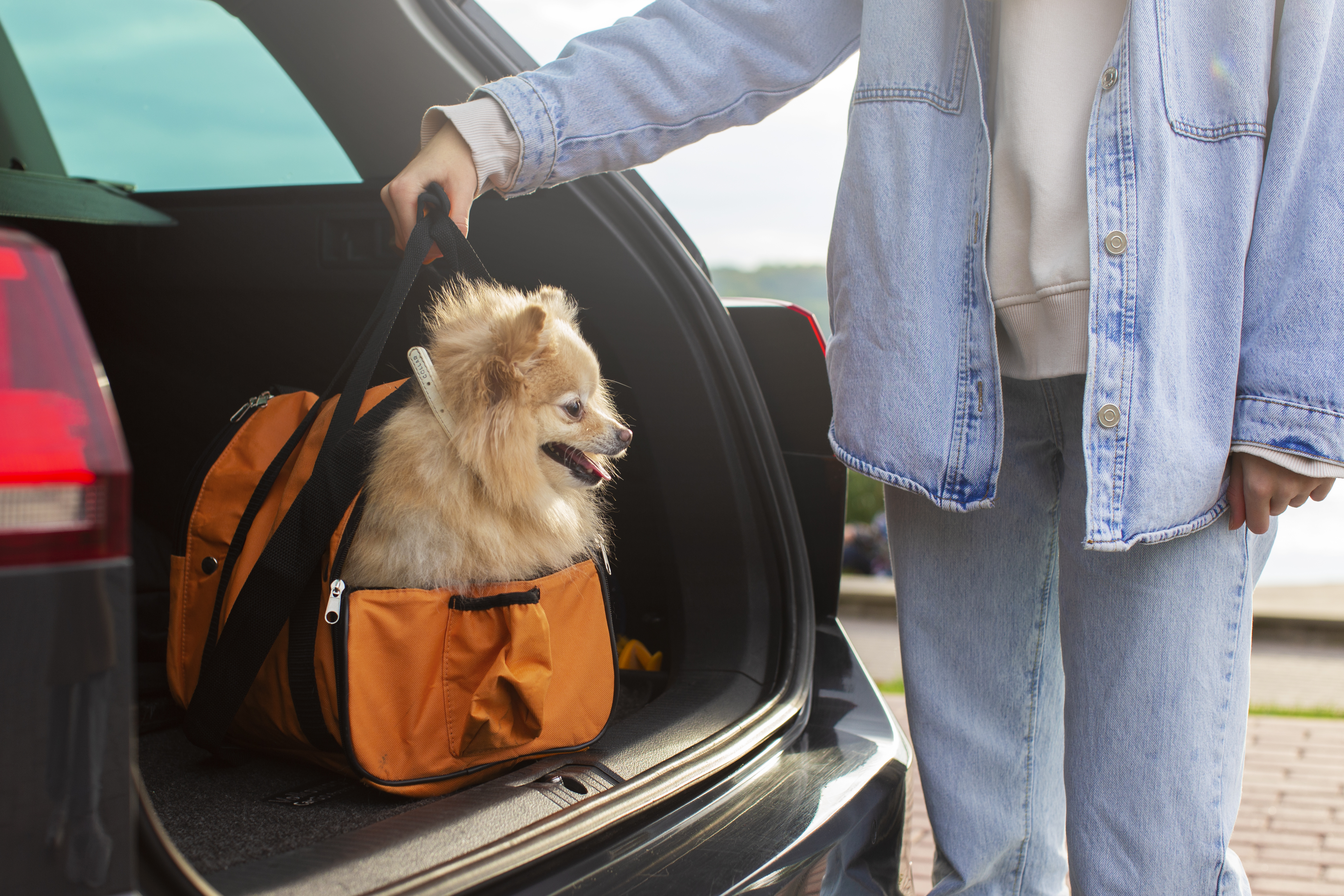Traveling with pets can be a rewarding experience, but it requires careful planning and preparation. Traveling with your pet requires special considerations regardless of whether you are taking a road trip, flying or staying at a pet-friendly hotel.
This guide looks at how you can make your trip enjoyable while at the same time ensuring that your pet is comfortable and safe.
The Importance of Planning When Traveling with Pets
Traveling with your pet means considering their needs just as you would your own. Pets have specific needs that must be accounted for, from transportation and accommodation to health and safety. Without proper preparation, your trip could end up being stressful for both you and your pet. Therefore, effective planning is key to a smooth and enjoyable journey.
Research Pet-Friendly Destinations
Researching places that welcome pets is necessary because not every destination allows pets. Tourist destinations now provide pet-friendly accommodations and activities yet you must confirm their suitability for your pet.
Where to Look for Pet-Friendly Destinations:
- Pet-friendly hotels provide accommodations that include pet areas and dog beds and pet-sitting services to their guests. The pet accommodation search websites BringFido and PetFriendly assist users in locating hotels that accept pets.
- Pet owners should verify park regulations because outdoor areas have specific rules about pet access and leash requirements. Pet owners should verify park regulations because outdoor areas have specific rules about pet access and leash requirements.
- When visiting the coast you should search for beaches that permit dogs. Some beaches maintain designated areas for dogs to play in the waves.
Preparing Your Pet for Travel
Your pet’s comfort and safety should be a top priority during your trip. This includes making sure that your pet is ready for travel, especially if they are not used to being on the road or flying.
Things to Do Before Your Trip:
- Before your trip take your pet to a veterinarian for health checks and vaccinations and prescribed medications. Flea and tick prevention needs to be updated regardless of your destination because you are visiting a different climate.
- Your pet needs to become comfortable with their travel carrier before air or extended car journeys. Introduce your pet to their carrier by adding familiar items like toys and blankets and by letting them discover the space.
- Your pet should receive proper identification through both a collar tag and microchip as well as a microchip for loss situations. Some pet owners decide to purchase GPS tracking collars as an additional pet identification method.
Choosing the Right Mode of Transportation
Your travel methods directly affect the way your pet feels. Your pet needs proper care regardless of whether you choose to drive or fly since both methods require attention to their comfort and safety.
Traveling by Car:
- Use a Pet Carrier or Seat Belt: If you are driving, ensure that your pet is properly restrained in a carrier or a pet seat belt harness. This will keep them from moving around in the vehicle which could be distracting or even dangerous.
- Breaks and Hydration: During long drives, stop frequently to allow your pet to relieve itself, stretch, and get a drink of water.
- Never Leave Your Pet in a Parked Car: Never leave your pet in a parked car, and especially not in hot weather, as this can lead to heatstroke or death.
Traveling by Air:
- Check Airline Pet Policies: Each airline has its own set of rules regarding pet travel, including pet size and carrier restrictions. It is important to check these policies ahead of time to prevent any surprises at the airport.
- Book Direct Flights: If possible, book direct flights to avoid the stress of layovers and delays for both you and your pet.
- Before security, remove your pet from their carrier, so they are comfortable with the carrier and have familiar scents with them.
Packing for Your Pet
When packing for your pet you should include all necessary items to ensure their comfort and safety. Here’s a checklist of items to bring:

- Pet Carrier or Travel Crate: The enclosure must have proper ventilation while providing enough space for your pet to both stand and turn around and lie down.
- Even though your pet has leash freedom in particular locations always carry a leash because it ensures their safety.
- The entire trip requires enough food for your pet along with their eating and drinking bowls. Airline passengers need to follow specific rules regarding liquid transportation during flights.
- You should bring enough pet medication to last throughout the journey as well as medical records that serve as emergency documentation.
- Your pet will feel more at ease when you bring their familiar comfort items such as blankets toys or beds to new environments.
- You should always have waste bags ready to pick up after your pet when you are in public areas.
Pet-Friendly Accommodation
Selecting the right lodging is one of the most important steps in planning a pet-friendly trip. Your accommodation should be comfortable and meet the needs of your pet.
Pet-Friendly Hotel Tips:
- Check Policies: Always check the hotel’s pet policy before booking. Some hotels have pet fees or pet size or breed restrictions.
- Hotel Amenities for Pets: Hotels are now offering pet beds, walking areas, and pet sitting services to help make traveling with pets easier.
- Local Pet Services: Look for pet-friendly restaurants, parks, and activities in the area that you can do with your pet.
Consider Your Pet’s Well-Being
The goal remains to have fun but it is important to make sure that the pet’s well being is taken care of at all times during the trip. This includes their health, comfort and safety at all times.
- Observe Your Pet’s Behaviour: Observe your pet’s behaviour during the trip. Stress can manifest in many ways, such as barking, drooling, or refusing to eat. If your pet appears distressed, give them some time to adjust or seek help from a local vet.
- Stay Hydrated: Your pet should be hydrated at all times, especially during long journeys or hot weather.
- Watch for Overexertion: Don’t over-exercise your pet, particularly in unfamiliar environments. Play sessions should be moderate and they should get plenty of rest.
Enjoying the Trip with Your Pet
After arriving at your destination take time to appreciate the trip with your pet by visiting pet-friendly areas or hiking trails or relaxing at a dog-friendly beach. Pets enjoy exploring new surroundings and the experiences you build together will become cherished memories for many years.
Pet-Friendly Activities:
- Hiking: Many national parks and outdoor locations allow pets on leashes, giving you an opportunity to enjoy nature together.
- Pet-Friendly Beaches: Some beaches welcome dogs, where they can run and play in the water.
- Pet-Friendly Restaurants: Look for restaurants with outdoor seating that allow pets so you can enjoy a meal together.
Traveling with pets needs careful preparation and thought but it can be a very enjoyable experience for both you and your pet. These tips will help you to make sure that your pet has as good a time as you do and that they are safe, comfortable and happy on the journey. Whether you are going for a short weekend break or a long holiday, a bit of planning will help to ensure that your trip is enjoyable for everyone.


